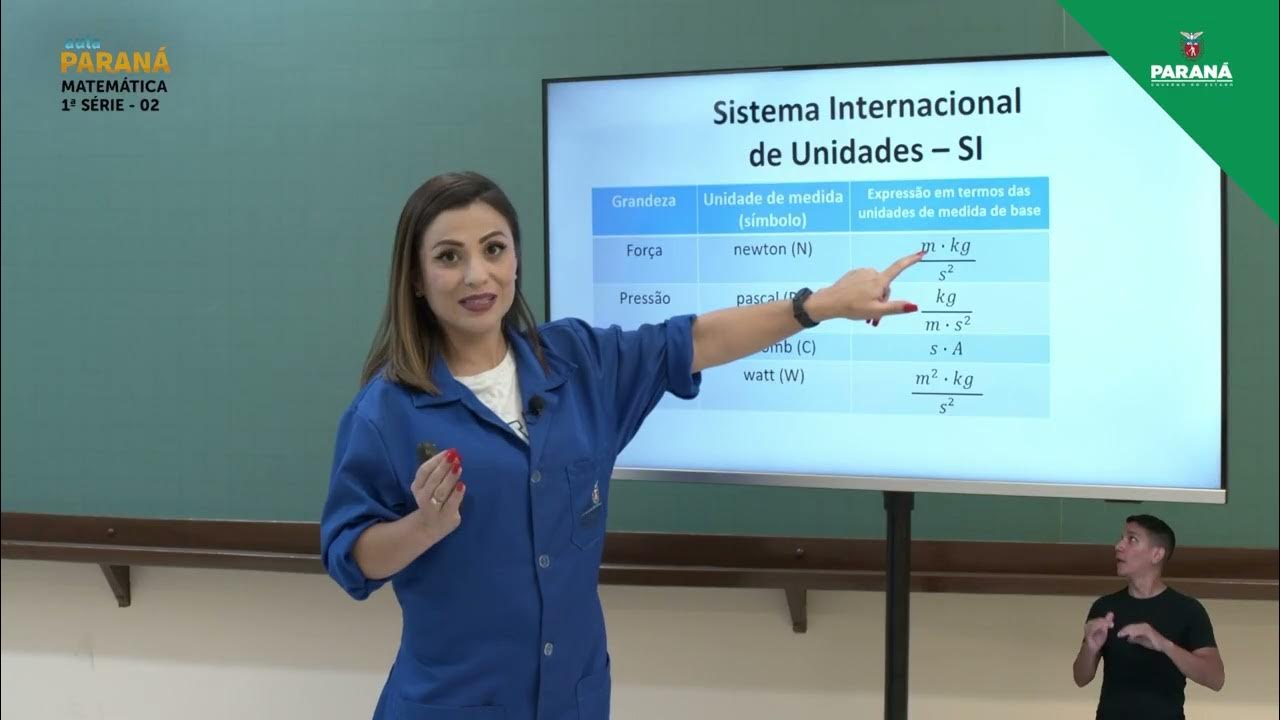O-Level Chemistry | 01 | Experimental Techniques [1/2]
Summary
TLDRThis educational video script introduces essential physical quantities measured in chemistry: mass, temperature, and volume. It explains the appropriate instruments for each, such as electronic balances for mass, thermometers for temperature, and various tools like gas syringes, measuring cylinders, pipettes, and burettes for volume. The script also highlights the importance of data loggers with sensors for precise measurements and accuracy. It concludes with a practical guide on selecting the right apparatus for different volume measurements, emphasizing the use of burettes for accurate, decimal-point volume requirements.
Takeaways
- 🔍 In chemistry, common physical quantities measured include mass, temperature, and volume.
- 🧪 For measuring mass, an electronic balance is used instead of a weighing scale, which measures weight.
- ⏱ A stopwatch is the standard apparatus for measuring time in experiments.
- 🌡 Thermometers, which can be digital, mercury, or alcohol-based, are used for measuring temperature.
- 📊 Volume of gases is measured using a gas syringe, while liquids are measured using various tools like measuring cylinders, pipettes, or burettes.
- 💧 The meniscus phenomenon affects the reading of liquid levels in narrow containers, with concave for most liquids and convex for mercury.
- 📏 Measuring cylinders are used for rough volume measurements of liquids, with the smallest division being one centimeter cube.
- 🌡 Pipettes are used for measuring fixed volumes of liquid, with the volume capacity indicated on the pipette itself.
- 🧪 Burettes offer high accuracy for measuring volumes of liquids, with the smallest division being 0.1 centimeter cube.
- 🔍 Data loggers, when connected with appropriate sensors, can record data more accurately and simultaneously for multiple physical quantities.
- 📝 The choice of apparatus for measuring volume depends on the required accuracy and the physical state of the substance (liquid or gas).
Q & A
What are the four physical quantities commonly measured in chemistry?
-The four physical quantities commonly measured in chemistry are mass, temperature, volume, and time.
What instrument is used to measure mass in a chemistry lab?
-An electronic balance or a mass balance is used to measure mass in a chemistry lab.
Why are weighing scales not suitable for measuring mass in scientific experiments?
-Weighing scales are designed to measure weight, not mass. In scientific experiments, the mass of a solid substance is required, and an electronic balance provides this measurement.
What is the difference between a digital thermometer and a mercury thermometer?
-A digital thermometer displays temperature readings digitally, while a mercury thermometer uses the expansion of mercury to indicate temperature on a calibrated glass tube. Mercury thermometers are no longer available in Singapore due to the toxicity of mercury.
What is a gas syringe and how is it used?
-A gas syringe is an instrument used to measure the volume of a gas. It is used by connecting it to a gas collection setup, and the volume of gas collected is read from the syringe's scale.
What is a meniscus and why is it important when measuring liquid volumes?
-A meniscus is the curved surface of a liquid, either concave or convex, within a container. It is important when measuring liquid volumes because it affects the reading; for a concave meniscus, the bottom is read, and for a convex meniscus, the top is read.
How does a data logger enhance the measurement of physical quantities?
-A data logger enhances measurement by providing more accurate readings than traditional methods, allowing simultaneous recording of multiple quantities, and offering the ability to connect with various sensors for different measurements.
What is the significance of the tare button on an electronic balance?
-The tare button on an electronic balance is used to zero the balance when a container is on it, ensuring that the measured mass reflects only the substance and not the container's weight.
Why is the bottom of the meniscus read when measuring liquid volumes in a narrow container?
-The bottom of the meniscus is read when measuring liquid volumes in a narrow container to account for the concave curvature of the liquid's surface, which ensures an accurate volume measurement.
How does a burette differ from a measuring cylinder in terms of volume measurement accuracy?
-A burette offers greater accuracy than a measuring cylinder, with the smallest division of 0.1 centimeter cube, allowing for precise measurements including decimal points. Measuring cylinders are less accurate, with the smallest division being one centimeter cube, suitable for whole number volume measurements.
Outlines

Этот раздел доступен только подписчикам платных тарифов. Пожалуйста, перейдите на платный тариф для доступа.
Перейти на платный тарифMindmap

Этот раздел доступен только подписчикам платных тарифов. Пожалуйста, перейдите на платный тариф для доступа.
Перейти на платный тарифKeywords

Этот раздел доступен только подписчикам платных тарифов. Пожалуйста, перейдите на платный тариф для доступа.
Перейти на платный тарифHighlights

Этот раздел доступен только подписчикам платных тарифов. Пожалуйста, перейдите на платный тариф для доступа.
Перейти на платный тарифTranscripts

Этот раздел доступен только подписчикам платных тарифов. Пожалуйста, перейдите на платный тариф для доступа.
Перейти на платный тарифПосмотреть больше похожих видео
5.0 / 5 (0 votes)






